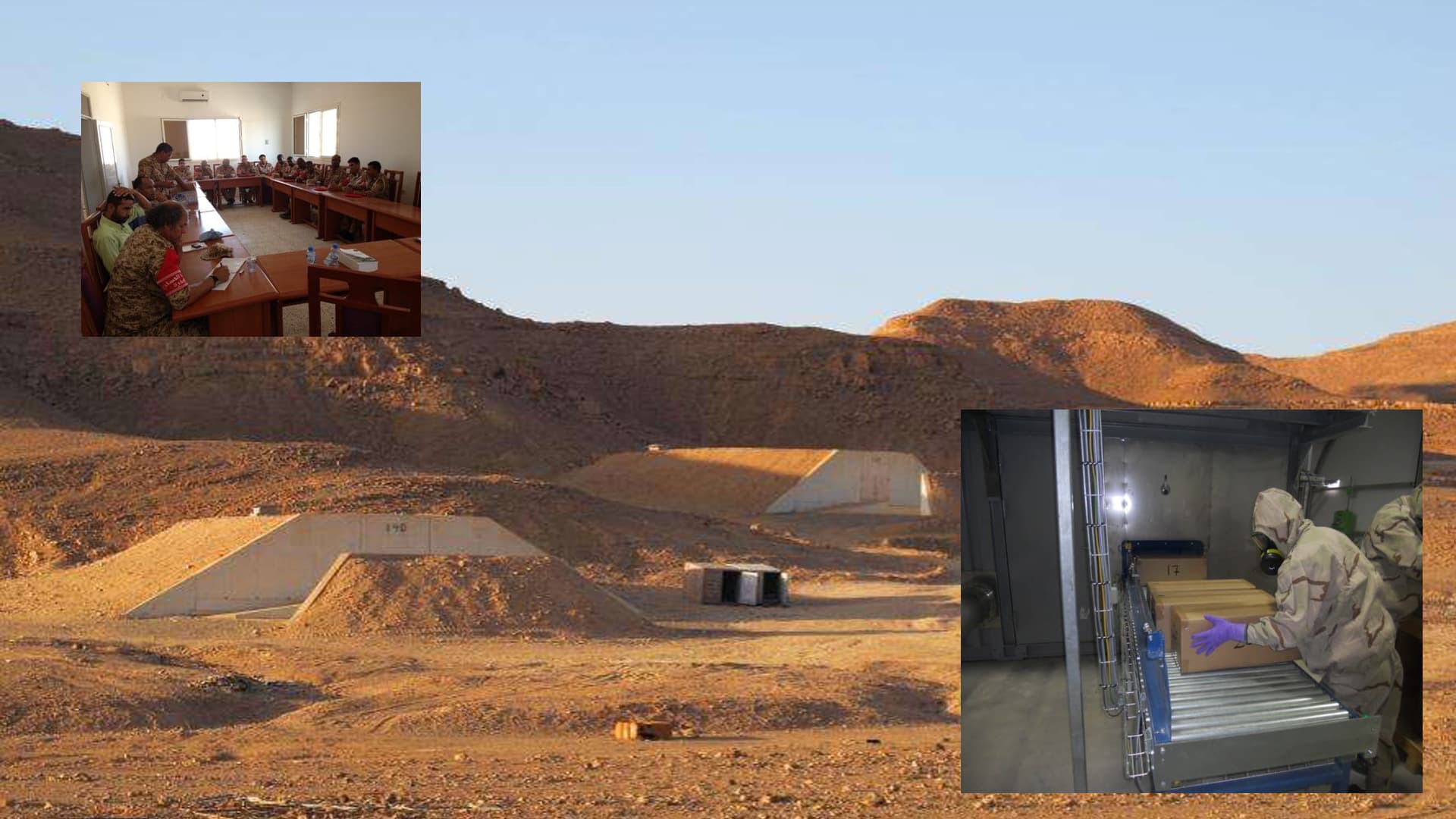
FORT BELVOIR, Va.—Throughout 2021, the Defense Threat Reduction Agency’s (DTRA) Cooperative Threat Reduction (CTR) Program is celebrating 30 years of collaboration with partners to prevent the proliferation of weapons of mass destruction (WMD) by securing and eliminating chemical, biological, radiological and nuclear (CBRN) material, infrastructure, and expertise.
To commemorate CTR’s milestone, DTRA will highlight significant contributions from CTR, among them the Chemical Security and Elimination (CSE) program. The CSE program, formerly known as the Chemical Weapons Elimination (CWE) program and Chemical Weapons Destruction (CWD) program, started in 1992 to build the capacity of the states of the Former Soviet Union (FSU) to reduce the threat from chemical weapons (CW) by securing and eliminating CW stockpiles, chemical research capabilities, and production facilities, while also redirecting scientists to peaceful purposes.
In 2006, the National Defense Authorization Act expanded the authorities the then-CWD program to beyond the FSU in order to support a chemical elimination project in Albania.
Shortly after the Arab Spring and the fall of Muammar Gaddafi, DTRA deployed teams to Waddan in Libya to build a munitions elimination facility in the Sahara Desert for Libya’s declared chemical weapons.
Joanna Wintrol, the project lead at the time and now responsible for the broader CSE program, recalled the gravity of the situation at the time with contractors performing a critical mission in a dangerous place.
“It was a very dangerous time, there were militants running around with tons of munitions and armed men rushing through the country,” Wintrol said. “Our people lived and worked there for a long time, housing and other facilities had to be built or shipped in,” she said. “Their physical safety was dependent on Libyan guards and we had to have trust in them.”
Scott Crow, Wintrol’s supervisor for both the Libya effort and current CSE work, watched her grow into a successful project officer and cited her relationship skills as key to the project’s success.
“The stakeholder map for this type of work is incredible,” Crow said. “Working with the Libyans themselves, then people at Organization for the Prohibition of Chemical Weapons (OPCW), State Department, Office of the Secretary of Defense, and her own people on the ground takes significant effort and skill,” he said. “Joanna absolutely shined in that area.”
Wintrol’s ability to manage stakeholders and execute the project quickly and quietly contributed to its success.
“The moment we learned there were undeclared chemical weapons in the country, it became my project and I saw it from start to finish,” she said. “Our efforts weren’t advertised, we didn’t publicize it, only people within the U.S. government, OPCW, and the Libyans knew what we were doing.”
Throughout the time the facility was operational, 570 chemical weapon munitions were destroyed.
“I was sitting at a kid’s birthday party at a pizza restaurant when I received the email of the last munition being destroyed,” Wintrol said. “I will never forget that feeling of accomplishment in that moment.”
With the Libya chemical weapons elimination project completed, and other legacy FSU projects concluding, CSE evolved to apply its expertise to a new set of missions, while also retaining readiness for contingency and elimination scenarios. CSE began to work with partners seeking to secure chemicals of security concern, establishing CSE as major player on the international chemical security stage over the past 7 years.
“There are dual-use chemicals out there that have legitimate commercial use but are precursors to chemical weapons,” Crow said. “These precursors have to be properly managed, accounted for, and controlled so authorized end users have access but unauthorized users don’t.”
Adversaries learned quickly that it was easier to procure Toxic Industrial Chemicals (TICs) than it was to develop or acquire traditional CW agents. The use of TICs on the battlefield against civilian populations drove CSE’s shift to assist partners with securing these dangerous chemicals before they could be used for nefarious purposes.
Wintrol recently returned from a five-year stint working for DTRA in Ukraine, during which time the CSE program has truly evolved.
“When I returned from my work in Ukraine, this was a whole new department at DTRA,” Wintrol said. “It was completely different from what I was used to doing so I began trying to utilize the interagency and international community to understand what other people were doing in this space,” she said.
Wintrol said they are working with INTERPOL to get their foot into countries in North Africa and Southeast Asia and to better define the requirements.
“It’s been interesting to see how creative the program gets to maintain its relevance and be an important player in this space,” said Wintrol. “The relationships we’ve built are really impressive and I’m excited to see where this mission takes us.”
For more information on the CSE program and other DTRA programs, visit www.dtra.mil.